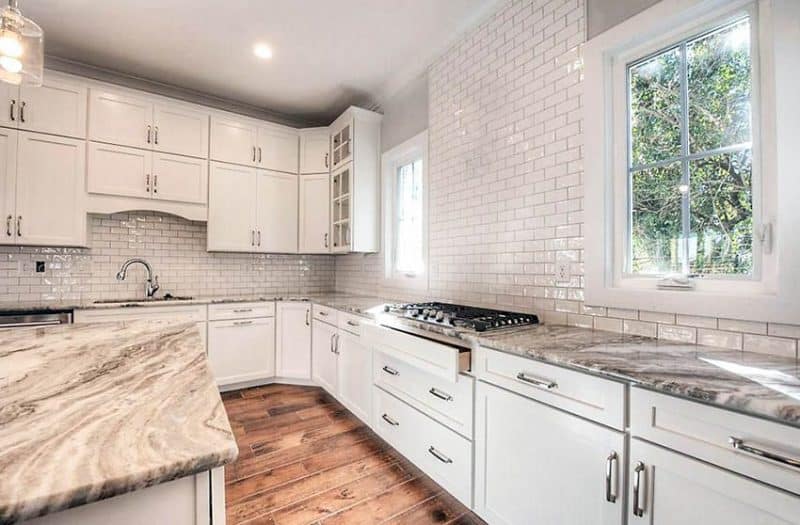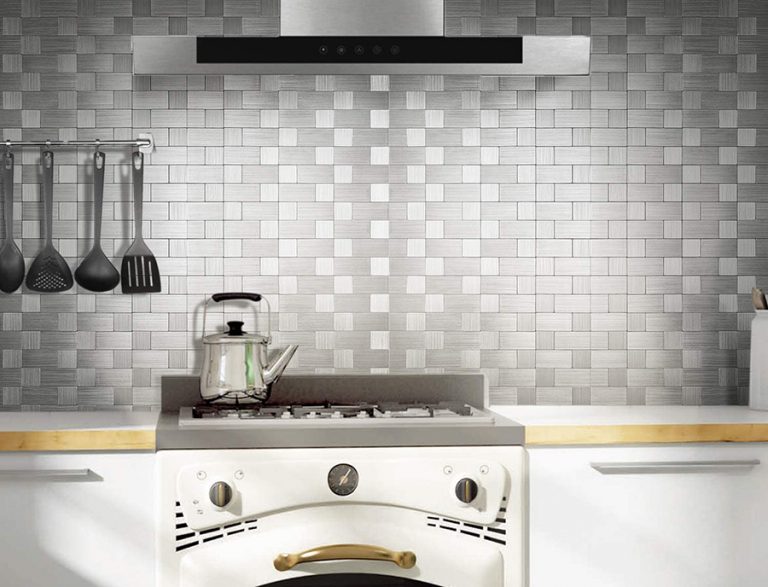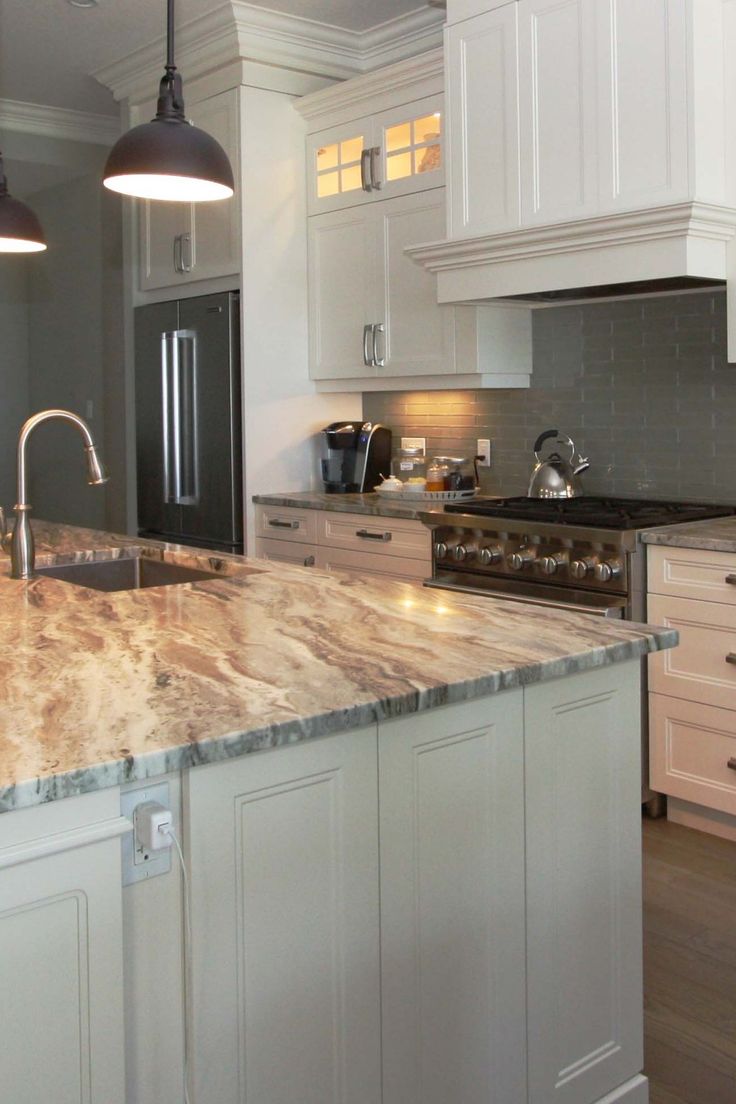Choosing the best subway tile for your kitchen backsplash involves considering various factors, including material, color, size, and finish. Subway tiles have become a popular choice for kitchen backsplashes due to their timeless appeal and versatility. One of the classic materials for subway tiles is ceramic. Ceramic subway tiles are durable, easy to clean, and come in a wide range of colors and finishes. They provide a clean and traditional look that suits various kitchen styles, from modern to farmhouse.
For a more upscale and contemporary look, some homeowners opt for subway tiles made of glass. Glass subway tiles add a sleek and reflective quality to the kitchen, creating a sense of depth and sophistication. The translucent nature of glass allows for interesting plays of light, making it an excellent choice for kitchens that could benefit from enhanced brightness.
Another material choice is porcelain subway tile. Porcelain offers durability and resistance to stains and moisture, making it a practical option for kitchen backsplashes. Porcelain subway tiles often mimic the look of natural stone or concrete, providing a modern and stylish aesthetic without the maintenance requirements of those materials.
When it comes to color, classic white subway tiles remain a popular choice for kitchen backsplashes. White tiles can brighten up the kitchen, making it feel more spacious and airy. They also provide a neutral backdrop that allows other design elements in the kitchen to stand out. However, colored subway tiles have gained popularity as well, adding a pop of personality and character to the kitchen.

Size is another crucial consideration when selecting subway tiles for a kitchen backsplash. The standard subway tile size is 3 inches by 6 inches, but larger formats such as 4 inches by 8 inches or 4 inches by 12 inches are becoming increasingly popular. Larger tiles can create a more modern and streamlined look, while smaller tiles can contribute to a classic and traditional feel.
The finish of subway tiles plays a significant role in their overall aesthetic. Glossy subway tiles have a reflective and polished surface that adds a touch of elegance to the kitchen. They are also easy to clean, making them a practical choice for busy kitchens. Matte finish subway tiles, on the other hand, provide a more understated and contemporary look. They are less reflective and can be a good choice for kitchens with a more muted color palette.
When it comes to installation patterns, the classic brick pattern is the most common for subway tiles. However, herringbone and vertical stack patterns have gained popularity for those looking to add a unique and modern twist to their kitchen backsplash. The installation pattern can significantly impact the overall visual impact of the subway tile, so it’s worth considering different options based on your design preferences.
Grout color is often an overlooked but important aspect of subway tile selection. Choosing a contrasting grout color can highlight the individual tiles and create a more defined pattern. On the other hand, matching the grout color to the tiles can result in a more seamless and cohesive look, emphasizing the overall texture rather than individual tiles.

Consider the overall style of your kitchen when selecting subway tiles. For a vintage or farmhouse-inspired kitchen, a beveled edge subway tile adds a touch of nostalgia and texture. In contrast, a flat-edge subway tile provides a more contemporary and clean-lined appearance, suitable for modern kitchens.
Subway tiles can be arranged in various patterns to create different visual effects. For example, a herringbone pattern can add a sense of movement and interest to the kitchen backsplash, while a classic brick pattern provides a timeless and familiar look. Experimenting with different patterns during the planning phase can help you find the perfect arrangement for your kitchen.
Ease of maintenance is a practical consideration when choosing the best subway tile for a kitchen backsplash. Smooth and glossy finishes are generally easier to clean than textured or matte finishes. Consider the amount of cooking that takes place in your kitchen and choose a subway tile that aligns with your maintenance preferences and lifestyle.
When selecting subway tiles, it’s essential to think about the long-term durability of the material. Ceramic, glass, and porcelain are durable options that can withstand the demands of a busy kitchen. Ensure that the chosen subway tiles are resistant to stains, scratches, and water damage, especially in areas that are prone to splashes and spills.

Budget considerations play a role in the decision-making process. While subway tiles are generally affordable, the price can vary based on the material, brand, and design. It’s worth exploring different suppliers and considering the overall cost, including installation and any additional materials needed, to stay within your budget without compromising on quality.
Subway tiles offer a timeless and versatile option for kitchen backsplashes. The key to finding the best subway tile for your kitchen lies in considering your personal style, the overall design of your kitchen, and practical factors such as maintenance and budget. With the right choice, subway tiles can enhance the aesthetic appeal of your kitchen while providing a durable and easy-to-clean surface that stands the test of time.
.jpg)
SUBWAY TILE KITCHEN BACKSPLASH HOW TO – Stagg Design

This is How to Rock a Beautiful Subway Tile Backsplash
:strip_icc()/149227403_1128522247578130_6231868015445811908_n-8c71c052c7d843b69a24ecc60eb5c213.jpg)
Choosing Grout for Cloé’s White Subway Tile Kitchen renovation inspiration, Kitchen backsplash

Fabulous Kitchen Vent Hood Ideas Elegant kitchen design

Best Peel and Stick Backsplash Tile Options

Brown Fantasy Granite Countertop White Cabinet Gray Glass Subway Backsplash Tile Porcela

Creative Subway Tile Backsplash Ideas

Related Posts:
- Cheap DIY Kitchen Backsplash
- Vinyl Kitchen Tiles Backsplash
- Small Kitchen Backsplash Ideas
- Modern Farmhouse Kitchen Backsplash
- Green Kitchen Backsplash Ideas
- Mexican Tile Backsplash Kitchen Ideas
- Rustic Stone Kitchen Backsplash
- Kitchen Backsplash Tile Ideas
- Decorative Kitchen Backsplash Ideas
- Kitchen Backsplash Tile Designs